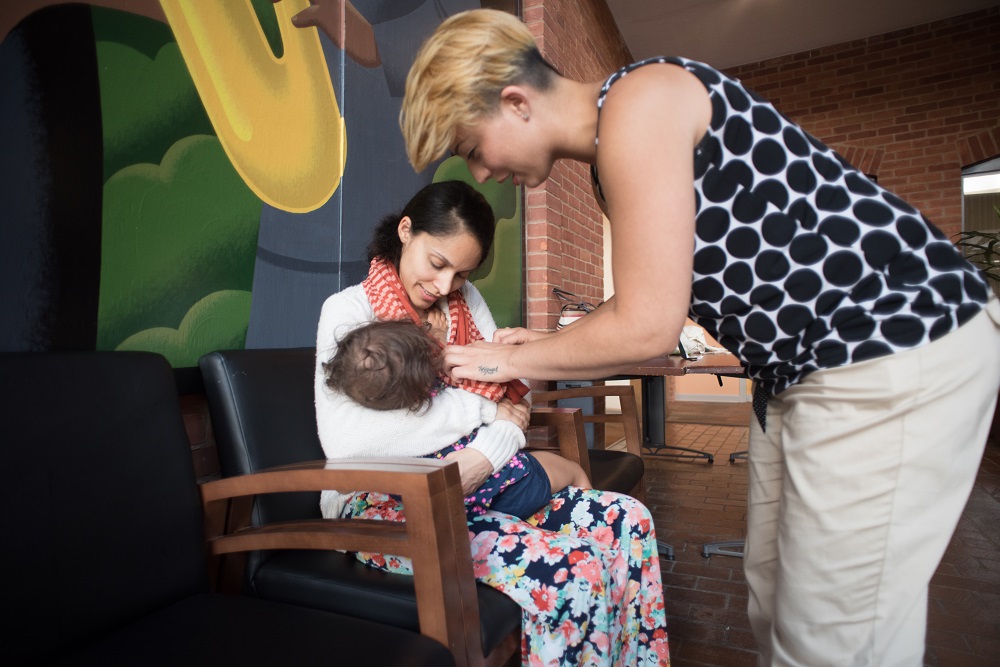Today’s post is part 2 in a series about pediatric payment reform by Lisa Honigfeld, vice president for health initiatives at the Child Health and Development Institute of Connecticut.
In my previous post, I discussed how critical pediatric primary care is in preventing illness over the lifetime and promoting lifelong wellbeing, including creating opportunities to close equity gaps for communities of color. My first post highlights why pediatric primary care is an ideal place to start our work to promote health, health equity, and integration of health with other services that exist in our communities for families and children.
Now let’s discuss HOW we can do it.
There are many opportunities to help pediatric primary care providers better meet the needs of families of young children – and we don’t have to look far for great examples.
Project DULCE in Boston is one. In that program, families of newborns had both a pediatrician and a “family specialist” who worked in the same practice and offered information on child development and support for the family during the baby’s first six months of life. The families could meet with the specialist during their routine pediatric visits, and the specialist could visit them at home or chat by phone if needed.
An evaluation of the program found the availability of this extra support paid off:
- Families were more likely to have received help with food, housing, and other needs.
- Children were more likely to have gotten vaccines on schedule, and their families were less likely to go to the emergency department for issues such as infant crying.
- The specialists identified high-risk families who needed more intensive support from outside agencies and connected families to those supports.
Clearly, Project DULCE provides a model of innovation in pediatric primary care that has enormous potential to meet the needs of families likely to experience adverse health and developmental outcomes due to factors outside of the health system.
There are other models too. Some pediatric practices have lactation consultants or nutritionists on site, making it easier for families to get expert help with feeding issues. Some pediatric primary care offices help to ensure that children who need behavioral health support receive it by integrating mental health clinicians within their office.

Breastfeeding program, the Hispanic Health Council
Gale Zucker Photography
These models build on the important role pediatricians and other primary care providers play in the lives of families of young children. Their offices are typically places where families already feel comfortable, where they tend to go frequently for care. By bringing additional expertise to pediatric primary care offices, these models help to better meet families’ needs – from help addressing concerns about a toddler’s development to assistance with housing challenges, food insecurity, or other issues that can affect the whole family’s health.
So why don’t they exist everywhere? Why don’t most primary care offices do this?
One of the biggest reasons is the way our system currently pays for health care. The pediatric offices that use these innovative models don’t get paid for providing these valuable services that contribute immensely to health. They generally receive a fee from insurance for traditional health visits, which are important in ensuring that children receive immunizations, developmental screening, and physical exams, and that parents receive general guidance on parenting. But insurance does not pay health providers for innovations that can address all the other life factors that keep families from helping their children grow and develop into healthy adults. Practices that do innovate to meet families’ needs, such as Project DULCE, use grant funding or participate in special programs to finance the additional services.
What can we do about this?
The Child Health and Development Institute is collaborating with the Connecticut Health Foundation to support a study group – which includes health care providers, insurance companies, and officials from state health agencies – that is working to develop new models to pay for pediatric primary care. Our work has a very simple goal: find ways to ensure that the way we pay for pediatric primary care encourages practices that will improve lifelong outcomes for children.
In other words, we’re looking for ways to make these kinds of innovative pediatric practices a valued outcome of our state’s efforts to reform the payment system. We are hoping that all pediatric providers can adopt new innovations to improve health outcomes, address health disparities, and better connect child health with community services.
The study group is looking to other states that have made child health a priority in their reform efforts. For example:
- Some states are supporting universal home visiting with community health workers who are extensions of the pediatric primary care site.
- Oregon has implemented community care teams that support a primary care sites in meeting a variety of family needs, beyond those that are traditionally met in the healthcare setting.
- Vermont’s Blueprint for Health requires all insurance companies to pay into community collaboratives that support pediatric primary care sites in providing whole-person health care, services that go beyond the traditional boundaries of health care.
In Connecticut, the State Innovation Model, a federally funded initiative focused on this work, is developing payment models to support many of the same goals in adult primary care. Our study group is doing similar work for pediatrics, with the understanding that health care for children is unique – and provides unique opportunities to improve health by ensuring that children get the best start possible.